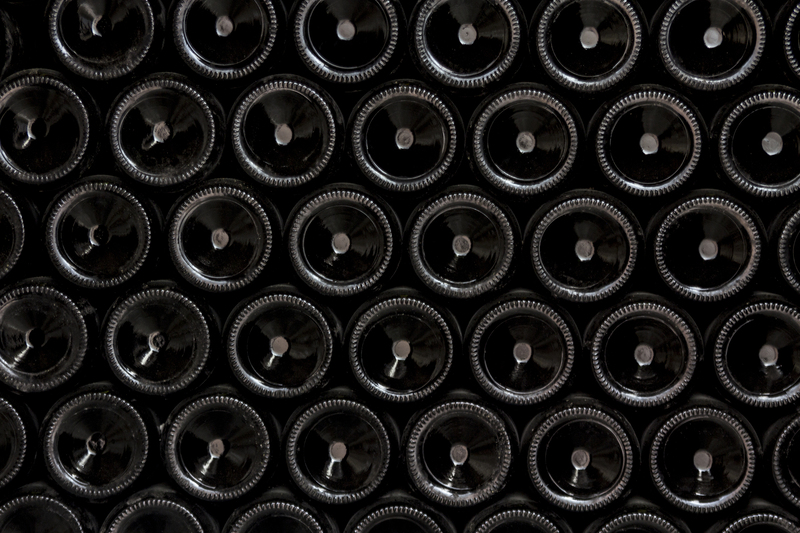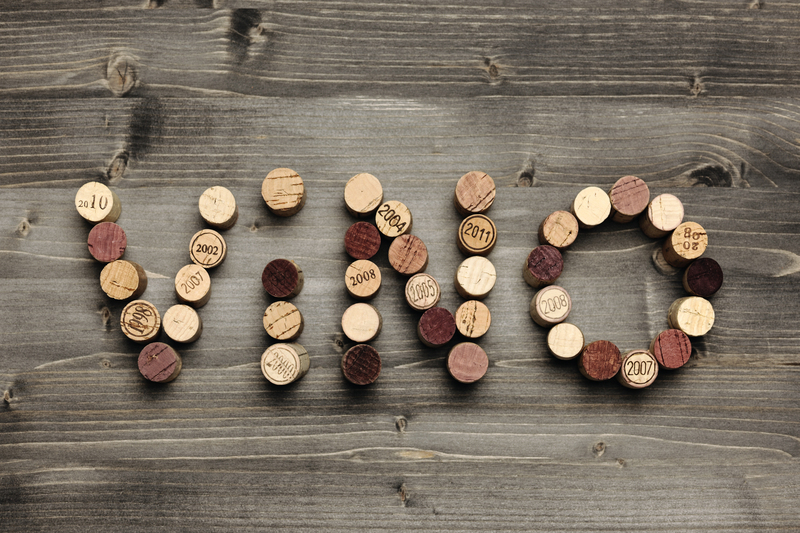Introduction: The Importance of Revolutionizing Cardboard Disposal and Packaging
In today's era of growing environmental awareness, efficient and sustainable methods of handling packaging waste are more critical than ever. Cardboard stands out as one of the most commonly used packaging materials globally, thanks to its versatility, affordability, and recyclability. However, the massive consumption of cardboard products has brought about unprecedented challenges related to waste management. Revolutionary methods in cardboard disposal and packaging are emerging to address these issues, aiming to minimize environmental impacts while maximizing resource efficiency. This article dives deep into the innovative strategies transforming the landscape of cardboard recycling and sustainable packaging solutions.

The Growing Challenge of Cardboard Waste
Cardboard containers and packaging contribute to about 31% of municipal solid waste in the United States alone, underscoring the urgent need for improved management solutions. Traditionally, cardboard disposal involved simple collection and recycling. However, as e-commerce and global shipping continue to surge, so does the volume of cardboard waste. Outdated practices are no longer sufficient, sparking the development and adoption of more revolutionary cardboard disposal and packaging methods.
Why Traditional Cardboard Disposal Isn't Enough
- Limited recycling capacity: Overburdened recycling systems often cannot keep pace with the influx of used cardboard, leading to improper disposal or landfill accumulation.
- Contamination risks: Food residues, oils, and improper sorting can decrease recycling efficiency and lead to more waste.
- Transportation emissions: The need to transport bulky cardboard to recycling facilities adds to the carbon footprint, undermining sustainability efforts.
Revolutionary Methods Reshaping Cardboard Disposal
To combat these challenges, new approaches to cardboard disposal are being explored and implemented worldwide. These innovative disposal solutions not only improve recycling rates but also foster circular economies and reduce environmental harm.
1. Decentralized Cardboard Shredding and Composting
A transformative trend is the on-site shredding and composting of cardboard waste. Businesses and institutions install compact shredders, enabling them to process cardboard into bedding material, mulch, or compost feedstock. Unlike traditional recycling, this approach keeps the process local, reducing transportation emissions and encouraging immediate resource reuse.
- Benefits: Decreased landfill reliance, improved soil quality, and reduced carbon emissions.
- Best for: Agricultural operations, schools, and large retailers with ample cardboard waste and outdoor spaces.
2. Advanced Automated Sorting Technology
State-of-the-art sorting systems incorporating artificial intelligence (AI) and machine learning are revolutionizing the way cardboard is separated from other recyclables. High-speed conveyors, sensors, and robotic arms identify, sort, and direct different grades of cardboard to the appropriate processing streams with unmatched precision.
- Improved purity: Minimizes contamination, making recycled cardboard more valuable and reusable.
- Efficiency: Reduces labor costs, speeds up processing, and increases recycling throughput.
3. Chemical and Biological Recycling Processes
Traditional cardboard recycling relies mainly on mechanical pulping, but chemical and biological methods are enabling the recycling of lower-quality or contaminated cardboard.
- Enzymatic breakdown: Specialized microorganisms digest cardboard fibers, converting waste into high-quality pulp for reuse.
- Chemical pulping innovations: New processes dissolve adhesives and inks, increasing the amount of recoverable fiber and expanding recycling capabilities.
4. Upcycling Cardboard Waste into New Products
Creative upcycling initiatives are turning used cardboard into everything from furniture and home decor to building insulation. These initiatives extend the life cycle of cardboard and divert it from landfills, while promoting eco-friendly, value-added products.
- Artisanal applications: Small business and artists create functional goods from post-consumer cardboard.
- Industrial applications: Companies manufacture eco-friendly construction panels, insulation, or acoustic tiles using processed cardboard.
Innovations in Cardboard Packaging
Revolutionary packaging techniques are crucial to reducing waste at the source. Advances in design, materials, and circular economy models are helping manufacturers and retailers minimize their environmental footprints.
1. Right-Sizing and Minimalist Packaging Design
An important breakthrough in sustainable packaging is the adoption of right-sizing software. This technology uses machine learning algorithms to calculate the smallest possible packaging size for each product, drastically reducing cardboard use.
- Material savings: Less cardboard is needed, resulting in cost and resource reductions.
- Shipping efficiency: Smaller packages mean more can fit per shipment, lowering transport emissions.
2. Intelligent and Interactive Packaging
The rise of smart packaging solutions incorporates RFID tags, QR codes, and embedded sensors, supporting supply chain transparency and improving recyclability. Certain packages now indicate when they've reached the end of their life and provide users with disposal or recycling instructions.
- Enhanced recyclability: Consumers are guided towards correct disposal practices.
- Sustainability insights: Data-driven tracking facilitates circular supply chains and waste audits.
3. Biodegradable and Water-Resistant Coatings
A longstanding problem has been that cardboard with plastic or wax coatings cannot be recycled easily. Today, researchers have developed biodegradable, water-resistant coatings made from plant-based polymers or starch, allowing these boxes to be composted or recycled without issue.
- Compostable solutions: Entire packages, including coatings, can now decompose naturally.
- Recycling compatibility: No need to separate layers before processing--a major leap in sustainable packaging.
4. Modular and Reusable Cardboard Packaging Systems
Businesses are increasingly investing in reusable and modular packaging solutions, such as foldable boxes and stackable crate systems. These can be collapsed, returned, and reprocessed multiple times before being finally recycled or composted.
- Lifecycle extension: Maximizes usage before disposal, reducing overall material demand.
- Closed-loop systems: Brands can take back packaging, ensuring responsible end-of-life processing and creating a circular economy.
Corporate Responsibility and Circular Economy Models
The adoption of new cardboard recycling innovations and sustainable packaging solutions is being driven, in part, by businesses committing to corporate social responsibility (CSR) and circular economy principles. Here's how companies can lead the way:
- Take-back programs: Larger retailers and brands encourage customers to return used cardboard for special recycling or upcycling projects.
- Supplier partnerships: Firms collaborate with packaging suppliers to redesign boxes for recyclability, reuse, or composting.
- Zero waste goals: Many organizations aim to send no cardboard waste to landfill by integrating advanced sorting, on-site processing, and circular design.
The Role of Consumers in Cardboard Waste Reduction
While industry innovation is critical, consumers play a vital role in supporting revolutionary cardboard packaging and disposal practices. Everyday habits make a difference:
- Proper sorting: Ensuring cardboard is dry and free from food contamination before recycling boosts recovery rates.
- Reusing boxes: Consumers can repurpose boxes for storage, crafts, or shipping, extending their usability.
- Advocacy: By choosing brands that use sustainable, innovative packaging, shoppers can influence wider adoption of eco-friendly solutions.
Case Studies: Success Stories in Revolutionary Cardboard Practices
Global leaders in cardboard recycling and sustainable packaging continue to set new standards. A few inspiring examples include:
- IKEA's Cardboard Furniture: The furniture giant has introduced lines of cardboard furnishings, demonstrating the strength and versatility of upcycled material.
- Amazon's Frustration-Free Packaging: By launching packaging optimized for recyclability and right-sizing, Amazon has reportedly eliminated thousands of tons of cardboard waste.
- Loop's Reusable Packaging Initiative: This innovative model delivers products in durable, reusable cardboard containers, which customers return for cleaning and reuse--limiting single-use waste.

Future Trends: Where Revolutionary Cardboard Solutions Are Headed
Innovation in the field of cardboard waste management and eco-friendly packaging is only set to accelerate. Emerging research areas and societal trends indicate several promising directions:
- Bioengineered Cardboard: Scientists are developing bio-based materials for cardboard production, reducing dependence on virgin wood pulp and lowering carbon emissions.
- Automated Reverse Logistics: AI-powered systems will further streamline the collection, sorting, and return of packaging for reuse and recycling.
- Community-Based Cardboard Composting: Urban composting centers could accept cardboard, turning neighborhood waste into valuable soil amendments for local agriculture.
Conclusion: Embracing the Revolution in Cardboard Disposal and Packaging
As we adapt to a more sustainable future, it's clear that revolutionary methods in cardboard disposal and packaging are essential to conserve resources, minimize pollution, and protect the environment. By embracing advanced recycling technology, sustainable design, and collaborative circular economy models, both businesses and consumers can play a pivotal role in reshaping the world of packaging.
Every cardboard box tells a story--not just of its contents, but of our collective ability to innovate, recycle, and remake our world for generations to come.
Key Takeaways
- Innovative cardboard disposal methods include on-site shredding, automated sorting, chemical/biological recycling, and upcycling into new products.
- Sustainable packaging innovations feature right-sizing, intelligent packaging, biodegradable coatings, and reusable modular systems.
- Corporate and consumer actions together drive the revolution towards a closed-loop, low-impact cardboard system.
- Future developments promise even greener materials, smarter collection networks, and more community-based solutions.
For those invested in sustainability, monitoring--and contributing to--these revolutionary methods in cardboard packaging and waste management is more crucial than ever.